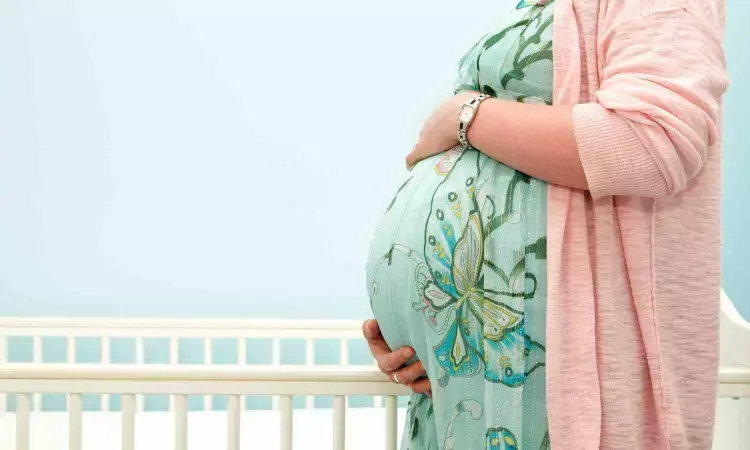- Home
- Medical news & Guidelines
- Anesthesiology
- Cardiology and CTVS
- Critical Care
- Dentistry
- Dermatology
- Diabetes and Endocrinology
- ENT
- Gastroenterology
- Medicine
- Nephrology
- Neurology
- Obstretics-Gynaecology
- Oncology
- Ophthalmology
- Orthopaedics
- Pediatrics-Neonatology
- Psychiatry
- Pulmonology
- Radiology
- Surgery
- Urology
- Laboratory Medicine
- Diet
- Nursing
- Paramedical
- Physiotherapy
- Health news
- Fact Check
- Bone Health Fact Check
- Brain Health Fact Check
- Cancer Related Fact Check
- Child Care Fact Check
- Dental and oral health fact check
- Diabetes and metabolic health fact check
- Diet and Nutrition Fact Check
- Eye and ENT Care Fact Check
- Fitness fact check
- Gut health fact check
- Heart health fact check
- Kidney health fact check
- Medical education fact check
- Men's health fact check
- Respiratory fact check
- Skin and hair care fact check
- Vaccine and Immunization fact check
- Women's health fact check
- AYUSH
- State News
- Andaman and Nicobar Islands
- Andhra Pradesh
- Arunachal Pradesh
- Assam
- Bihar
- Chandigarh
- Chattisgarh
- Dadra and Nagar Haveli
- Daman and Diu
- Delhi
- Goa
- Gujarat
- Haryana
- Himachal Pradesh
- Jammu & Kashmir
- Jharkhand
- Karnataka
- Kerala
- Ladakh
- Lakshadweep
- Madhya Pradesh
- Maharashtra
- Manipur
- Meghalaya
- Mizoram
- Nagaland
- Odisha
- Puducherry
- Punjab
- Rajasthan
- Sikkim
- Tamil Nadu
- Telangana
- Tripura
- Uttar Pradesh
- Uttrakhand
- West Bengal
- Medical Education
- Industry
Chances of successful pregnancy same with embryo transfer on day three or five, reveals BMJ study

In IVF treatment, embryos are traditionally transferred in the uterus three days after fertilization. Due to improvements in laboratory techniques, this is now also possible after five days. It was assumed that this increases the chance of a successful pregnancy. A study by Radboud university medical center and Amsterdam UMC shows that the day of transfer does not influence the success rate of the IVF trajectory.
One out of thirty children in the Netherlands is conceived via in vitro fertilization, or IVF for short. In this procedure, egg cells are fertilized outside the body and grown in the laboratory for several days. One or more embryos are then transferred back in the uterus and the rest is frozen. Traditionally, the laboratory phase lasts three days. Due to technical improvements, embryo transfer is now also possible after five days. The idea is that only viable embryos remain after five days, which increases the chance of a successful pregnancy. However, this leaves fewer embryos in the freezer.
Previous research has shown that the chance of success after the first transfer is indeed higher when this takes place on day five than on day three. But these studies did not evaluate the results of the entire IVF trajectory, including any subsequent transfer of frozen embryos. Research by Radboud university medical center, carried out in collaboration with Amsterdam UMC, changes this.
The same number of pregnancies
The study was conducted in 21 Dutch IVF centers among more than 1,200 women. At least four embryos had to be available for transfer two days after fertilization. In half of the women, embryos were transferred on day three, in the other half on day five. The outcome was the chance of a successful pregnancy during the entire IVF trajectory. This turned out to be the same in both groups, around sixty percent.
Researcher Simone Cornelisse explains the results: ‘Ultimately, IVF is about a successful pregnancy, and not only about the chances of success after the first transfer. Abroad, where IVF care is not insured, clinics often advertise their success rates from the first transfer on day five. In doing so, they provide an incomplete representation of the situation. Our study shows that women should have a choice about the moment of transfer.’
Personal decision
Other results from the study may influence that choice. As in previous research, there was a higher chance of a successful pregnancy after the first transfer on day five. There were also fewer miscarriages in that group. On the other hand, if the embryos were transferred on day three, more could be frozen for later use and the risk of premature birth was somewhat lower. Both choices have advantages and disadvantages, but do not make any difference to the overall success rate.
‘It is a very personal decision’, says clinical embryologist Liliana Ramos, one of the study leaders. ‘For some people, getting pregnant as quickly as possible is very important, for example if the woman is older. Someone else attaches more value to a larger number of frozen embryos or wants to keep the chance of premature birth as small as possible. There is no guideline regarding the day of transfer. Therefore, a couple who want to become pregnant must discuss it with the doctor and make a choice together.’
Reference:
Cornelisse S, Fleischer K, van der Westerlaken L, de Bruin J, Vergouw C, Koks C et al. Cumulative live birth rate of a blastocyst versus cleavage stage embryo transfer policy during in vitro fertilisation in women with a good prognosis: multicentre randomised controlled trial BMJ 2024; 386 :e080133 doi:10.1136/bmj-2024-080133.
Dr Kamal Kant Kohli-MBBS, DTCD- a chest specialist with more than 30 years of practice and a flair for writing clinical articles, Dr Kamal Kant Kohli joined Medical Dialogues as a Chief Editor of Medical News. Besides writing articles, as an editor, he proofreads and verifies all the medical content published on Medical Dialogues including those coming from journals, studies,medical conferences,guidelines etc. Email: drkohli@medicaldialogues.in. Contact no. 011-43720751


